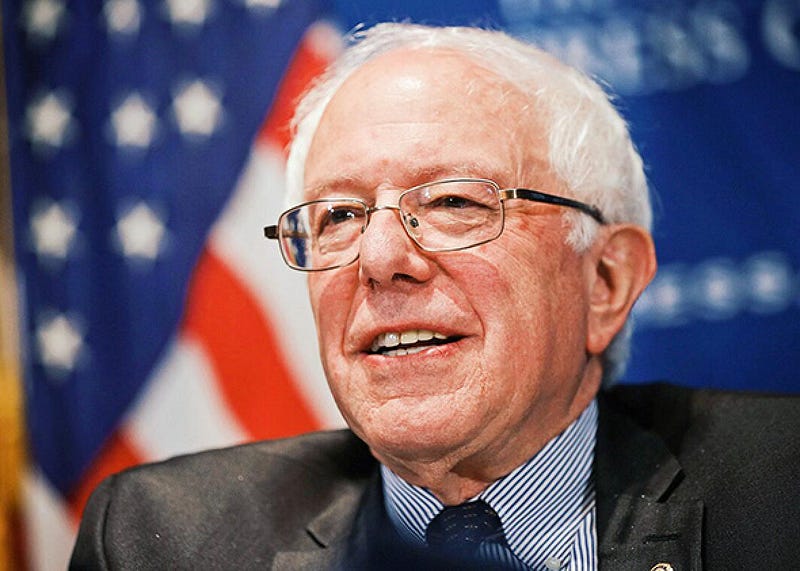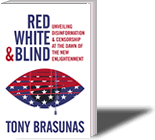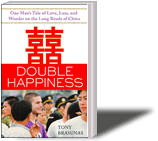This Is A Year To Vote With Your Heart
11 2016
Not only is Bernie right on the issues, he’s better positioned to beat Trump.

Because of the realities of our two-party political system, where generally only two candidates ever have a chance to win a major office, we’re always given exactly two ways to think about our choice in the voting booth:
- Vote for the candidate you prefer
- Vote against the candidate you fear
We also have a political advertising climate that emphasizes attack ads and negative campaigning. Thus many millions of people every year are convinced not to vote for the candidate they want, but to vote against the candidate they fear. In many elections, voters become so afraid of the candidate they’re voting against, they’ll even choose a candidate on their side who they like less simply because they think that candidate will beat the candidate they fear.
This is called the “lesser of two evils” strategy, where you don’t vote idealistically for whom you like, you vote pragmatically for who you hope can beat someone you like even less.
How does this strategy work out?
Starting with History
First, obviously, this “lesser of two evils” strategy has a basic problem: You always end up with evil. You never get to elect candidates you actually like.
But what’s worse is that many times you don’t even avoid the candidate you fear.
For instance, in 2004, the Democratic primary came down to a race between Howard Dean and John Kerry. Dean was viewed as the anti-war candidate, the more progressive candidate, the candidate who was standing up and calling out the Bush Administration on some of its worst policies. Kerry was considered the moderate, who wanted to reduce the war’s costs but who stopped short of calling for its end; he even apologized at one point in his campaign for sounding too vehemently anti-war.
As the primary season proceeded, the media repeatedly told Americans essentially this:
“This is not the year to vote with your heart. Vote with your head. Howard Dean isn’t electable. Beating Bush is more important than voting for whom you prefer.”
So voters were asked to support a candidate who was not opposed to the war and who, in general, agreed with them less. The point was that, in theory, he would be more electable. Kerry was the lesser of two evils.
Democrats were convinced. They voted with their heads (i.e. their fear), and gave Kerry the nomination instead of Dean.
How did that work out?
Once in the general election against Bush, Kerry ran a campaign that, predictably, wasn’t strongly differentiated from Bush’s campaign on the issues, and he was defeated. The lesser of the two evils lost.
Four years later, in 2008, Democratic voters were again presented with a choice between “voting with their heads” and “voting with their hearts.” Hillary Clinton was the clear choice for those voting with their heads — she had experience in the White House and strong connections with virtually everyone in the Democratic Party establishment.
But something different happened that year. A relatively little-know Senator, Barack Obama, was inspiring new voters by the thousands and motivating a groundswell of support among the party base. The media repeatedly told us Obama was “not electable.” But voters went with their hearts (i.e. their inspiration), and they chose to nominate this relative newcomer, an African American, a “long shot.”
How did that work out?
In the general election Barack Obama inspired the base of the Democratic Party — and also inspired millions of new voters and independents — and he swept to victory over a relatively popular Republican named John McCain.
Another Year, Another Choice
Today, in 2016, the Democratic Party faces the same issue: Shall we vote with our hearts (our inspiration), or shall vote with our heads (our fear)?
Just as in 2004 and 2008, we have an establishment candidate, Hillary Clinton, on one hand, who the media tells us is more “electable,” even if she isn’t as progressive on the issues as most Democrats would like; and we have an unexpected rising progressive candidate, Bernie Sanders, on the other hand, who connects strongly with the base of the party, advocates for the issues voters most deeply care about, and is inspiring new voters and independents.
Bernie Sanders advocates breaking up the giant Wall Street banks that caused the financial catastrophe of 2008, which decimated wealth and home ownership among the middle class. Bernie also advocates for uncompromising and immediate action on climate change, even-handed peace in the Middle East, strong racial justice measures, greater economic fairness, and — most importantly — ending the current campaign financing system many increasingly consider corrupt.
Hillary advocates for many of these same issues, but less forcefully and with less conviction and less of a track record. She has benefited considerably from the campaign financing system, so she doesn’t speak as credibly when she vows to reform it. She’s more hawkish on the Middle East and, as a multi-millionaire herself, she’s less committed to measures to increase economic fairness.
Today the mainstream corporate media are running piece after piece about how bad Donald Trump, Ted Cruz, and Marco Rubio are, strongly suggesting to us in the Democratic primary to vote our fears. The media also runs pieces suggesting that Bernie’s ideas are implausible or impossible, or that he won’t be able to “get anything done,” suggesting we ought to choose someone more moderate. We’re told that nominating a true progressive is a long shot, and will fail. So be afraid, be very afraid.
How’s it going to work out?
Repeated polls indicate, perhaps without surprising those of us aware of history, that it is actually Bernie Sanders who is both more “electable” and more likely to defeat the Republicans.
And as this video points out, it is actually Bernie who will be able to get more done in the White House:
Nevertheless, the media ignores the polls, or calls them “speculative” or “unreliable,” and they stick to their story that only connected political insiders can get things done.
Another idea is trotted out — history. Be afraid of history.
They don’t go back to 2008 or 2004. Nor do they choose 2000, another year the Democrats nominated the moderate (Al Gore) in the primary and lost the general election.
No, they go all the way back to 1972. “Look what happened in 1972,” they say. “The Democratic Party nominated a true anti-war candidate (George McGovern). He lost!”
Kathy Donohue points out in her excellent piece on Salon.com that this history is flat wrong. Yes, McGovern was the more liberal candidate that year, but he was hardly a progressive connecting with the base at all; he wasn’t inspiring new voters or even connecting with existing Democratic popular support, such as labor unions. Donohue rightly points out that if you want to go back to that era, the year that Democrats really must consider is four years earlier, 1968, when a real progressive connecting with the base (Eugene McCarthy) was passed over in favor of a weak moderate (Hubert Humphrey). Humphrey had support only among the Democratic Party establishment and no real support among the base of the party. Humphrey won the primary through extremely unpopular actions taken by the Democratic Party establishment, overruling the will of the Democratic base.
How did that work out?
Humphrey lost meekly to a young Republican named Richard Nixon.
The moral of these stories isn’t simply to nominate a moderate, or to nominate a progressive, it’s to nominate a candidate in step with the voters. This should be obvious in a democracy, but for some reason the Democratic Party repeatedly misses it.
We Must Choose Wisely This Time
So in 2016, the truth should be obvious to anyone observing history and democracy: If you want to win, choose the candidate who is inspiring and connecting with the voters.
This year, there can be no doubt who that is. Bernie Sanders is inspiring more and more of the base every day. He calls it a “political revolution,” and anyone who’s been to his 10,000-person rallies will tell you those words don’t feel like an exaggeration. Should he be awarded the nomination, he will differentiate himself very clearly from the Republican, inspire the base, bring in new voters and independents by the millions, and he will win.
So despite what the media tells us, let’s not have another 2000 or 2004. Let’s have a 2008, where we vote with our hearts, choose the candidate we’re inspired by, and know that the odds of victory in the general election are squarely in our favor.
This is a year to vote with your heart.




Connect & Share